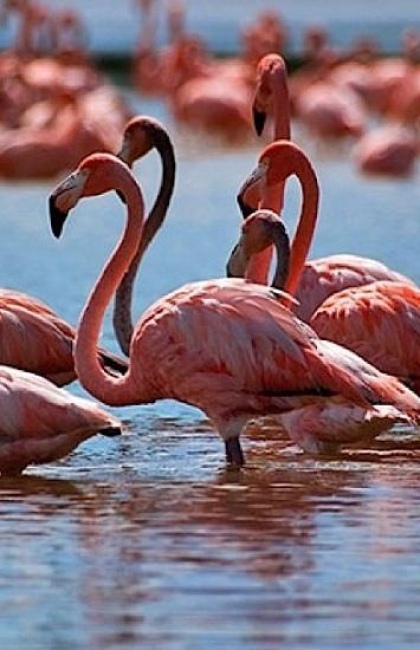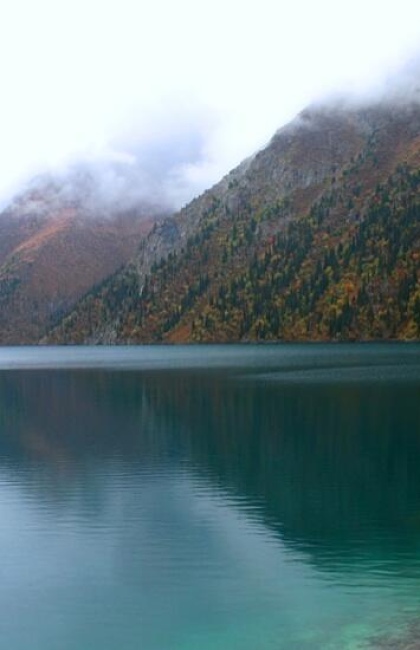Hidden gems: Kazakhstan’s most underrated tourist attractions
Kazakhstan has been blessed with a prime location in the heart of Eurasia, and it is adorned with breathtaking natural landscapes. Furthermore, our nation takes pride in its profound historical and cultural heritage left to us by our ancestors. Despite the abundance of historical and architectural treasures, enchanting lakes, towering mountains, and captivating canyons, many of Kazakhstan's hidden gems remain undiscovered by most tourists or are not given the attention they deserve. In this article, we will unveil a compilation of stunning attractions, which we believe are often overlooked, yet hold a unique charm.
Botai Settlement
The first destination we'd like to highlight is the settlement of Botai in the North Kazakhstan Region. In fact, there are approximately twenty such settlements, dispersed at significant intervals along the Tobol, Imanburlyk, Chaglinka, and Turgai rivers. When we mention Botai, it evokes thoughts of the Chalcolithic-era Botai culture. This tribe is believed to be responsible for the first domestication of horses in history. Over the years, discussions among historians have revolved around this topic. Recent studies suggest that the domestication of the horse may have also occurred in Russia, but the substantial role of ancient Kazakh tribes in this significant development cannot be disregarded. If you're interested in this topic, read our article "Is Kazakhstan the origin of the domestic horse?".
Other notable facts about the Botai tribe include the ancient settlers' knowledge of preserving meat for extended journeys and their advanced weaving techniques. Researchers were astonished by the construction of long wicker poles coated with clay, which served as insulation against the cold. Most striking, however, is the discovery of a trepanned skull, bearing two holes made while the person was still alive. It’s proof of the surgical skills of the local tribes as far back as 3500 BC. Despite nearly half a century of exploration, Botai remains rife with enigmas and revelations.
For a deeper insight into this remarkable culture, one can visit the Botai-Burabay Museum, situated within Burabay National Park. The museum replicates the ancient Botai people's dwellings. Each of these structures provides tourists with a glimpse into Botai culture, including rituals, fishing techniques, weaponry, tool-making, the kumis production process, and more.

Dzungarian Alatau Mountains
We now journey southeast to the Dzungarian Alatau Mountains. These majestic peaks are a hidden gem that rightfully earns its place on the list of underappreciated destinations, often overshadowed by the more popular Ile Alatau Mountains. Yet, the untamed beauty of the Dzungarian Alatau is sure to captivate anyone who visits.
These mountains are home to the country's highest waterfall, Burkhan-Bulak, the historical Dzungarian Gate, which witnessed centuries of Silk Road caravans passing through, and the serene Lake Jasylkol. At the foot of these mountains, you'll also discover the renowned Altyn-Emel National Park, home to sand dunes, rejuvenating springs, and ancient petroglyphs. The Kalakai Prehistoric Monument, once the site of ancient rituals and sacrifices, also finds its place in this remarkable region.
In these parts, local alpine meadows adorned with vibrant, fragrant flowers have created a paradise for beekeepers who craft the best honey in the country.
Special attention is due to the Sievers apple tree – an ancient wild species that humanity has managed to domesticate. This apple tree now teeters on the brink of extinction, with the Dzungarian Alatau being home to the largest concentration of these trees, accounting for about 49% of their population. The ancestor of many modern apple varieties now faces a precarious future. First described by the botanist I. Sievers in 1793, this apple tree bears his name and remains a vital part of the region's heritage.

The Town of Baikonur
Our next destination is the town of Baikonur, home to the world’s first and largest space launch facility, from where the first ever human was launched into space. However, reaching this town is not an easy task, as both the town and the cosmodrome are locations of exceptional importance. In the past, their exact whereabouts were shrouded in secrecy, and the term "somewhere in the steppes of Kazakhstan" was a testament to the rigorous Soviet-era confidentiality surrounding Baikonur. While it's somewhat more accessible now, gaining access to the town still requires obtaining the necessary documentation.
In the heart of Baikonur, you'll find the Museum of the History of the Baikonur Cosmodrome. The museum's collection includes models of launch vehicles, spacecraft, fragments of rocket and space technology, spacesuits, personalized on-board suits with astronauts' autographs, samples of space nutrition, and medical aids used in space.
As you stroll down the avenue, you'll encounter a monument to Yuri Gagarin, the first human to journey into space. Next to it, a Soyuz launch vehicle stands tall. Both the monument and the rocket reside within the confines of Peace Park. Nearby, there's also a bust of M. Yangel, the Soviet designer of rocket and space complexes, with a towering intercontinental rocket 15A15 (SS-17) installed behind it.
Should you follow Koroleva Avenue, you'll discover a monument honoring the pioneers of the cosmodrome, adjacent to which stands the majestic "Glory to the Conquerors of Space" stele. On Gagarin Street, a mosaic panel titled "Cosmonaut" portrays an astronaut floating in outer space with outstretched arms. At the opposite end of the same street, there's a square adorned with various steles and monuments, including the "Space and Science" stele – a symbol of the town.

Caspian Sea
The next hidden gem in Kazakhstan is often referred to as a "sea," although it's, in fact, an immense lake. The Caspian Sea, the largest lake on Earth, is a relic of the ancient Tethys Ocean. This remarkable body of water serves as a vast reservoir of minerals and oil deposits. Interestingly, during the Soviet era, there were plans to completely drain the Caspian Sea due to the discovery of oil reserves, but fortunately, this project never came to fruition.
The Caspian Sea's shores are home to a diverse array of fascinating wildlife, and its waters teem with valuable fish species. Notably, the Caspian Sea is a major global producer of black caviar.
Aktau, the primary resort city on the Kazakh Caspian coast, offers beach vacations that may not rival tropical islands but possess their own unique charm. There are numerous popular sandy beaches, as well as a range of amenities like hotels, cafes, and restaurants for those who seek comfort. However, for those desiring solitude, there are pristine, unspoiled beaches with scarce human presence. The beach season typically spans from May to September, occasionally extending into October.
While the vegetation along the Kazakhstani coast of the Caspian Sea may not be lush, the northern shore along the Kigach River boasts an exotic surprise – lotus flowers. This location is the northernmost lotus plantation globally and is a true curiosity in Kazakhstan. These sacred flowers, cherished by many Southeast Asian cultures, have found an unexpected home within the vast expanses of Kazakhstan. The spectacle of pink lotus blossoms adorning the blue-green waters of the Caspian Sea is a sight that never fails to captivate observers.
-1.jpg)
Lake Tuzkol and Khan Tengri Peak
Leaving the ancient Caspian Sea behind, we embark on a journey of approximately three thousand kilometers to the southeastern reaches of the country, where Lake Tuzkol lies, concealed from most human eyes. Often referred to as a miniature Dead Sea due to its salt content, Lake Tuzkol remains a well-kept secret, even to many locals in Kazakhstan, let alone foreign tourists. Nevertheless, the expedition to reach this remote destination is truly rewarding.
Not everyone may summon the courage to swim in Lake Tuzkol. A dip in it results in an instant coating of salt on your skin, requiring an ample supply of fresh water for rinsing.
The lake's surface mirrors the majestic Khan Tengri, the highest peak in Kazakhstan standing at 7,010 meters (23,000 ft). However, the proximity of Khan Tengri Peak, seemingly just a stone's throw away, presents a formidable challenge. For a time, it was considered the highest point in the Tien Shan until the discovery of Jengish Chokusu. Often referred to as the "Bloody Mountain," this epithet owes itself to the sun's rays, which cast the marble façade of the mountain in crimson-red hues. Khan Tengri Peak stands as a cherished goal for any dedicated climber. Conquering it is no small feat, but the ethereal sensation of standing at an altitude of seven thousand meters is well worth the effort.
Saryarka
The word "steppe" stirs profound emotions in the heart of any true Kazakhstani, as it blankets the majority of our country and is somewhat synonymous with the word "Motherland." The Great Steppe of Saryarka is listed as a UNESCO World Heritage site. In this expansive realm, there are numerous hidden treasures awaiting discovery. If you have the time and a strong desire to acquaint yourself with the essence of Kazakhstan, then the boundless landscapes of Saryarka beckon.
The most splendid attractions within Saryarka are the Korgaljyn and Naurzum nature reserves. These sanctuaries have earned international recognition as prime destinations for birdwatchers and ornithologists. The lakes of the Naurzum Nature Reserve form part of the migratory route for various bird species. Thoughtfully designed eco-routes cater to tourists, enabling them to relish the natural beauty of the region while preserving its ecological integrity.
Situated a mere 130 kilometers (81 mi) from Astana, the Korgaljyn Nature Reserve is home to rare avian species such as pink flamingos and Dalmatian pelicans. Among its many unique features is Tengiz, one of the world's most exceptional lakes and the largest habitat of pink flamingos in the country.
Saryarka is a region of incredible diversity, where historical monuments, ancient ruins of Buddhist temples, necropolises, archaeological and memorial complexes, pristine lakes, ancient mausoleums, and more await exploration. Within the bounds of Saryarka the cradle of nomadic tribes' civilization, Ulytau, can be found.

Lake Zaysan and Kiin-Kerish Tract
As you journey from Saryarka to the eastern reaches of the country, you'll encounter the mesmerizing Kazakh Altai, where Lake Zaysan, the planet's oldest lake, graces the landscape. Zaysan is cherished for its inviting water temperatures, awe-inspiring natural surroundings, and its considerable distance from industrial cities. The meandering shores, adorned with clay formations that resemble the dwellings of fantastical creatures, add to the lake's allure.
Notably, a visit to Lake Zaysan isn't complete without exploring the nearby Kiin-Kerish Tract. Here, you can truly immerse yourself in an otherworldly experience, as the orange-red clay rocks transport you to the realm of Mars. It also allows you to delve into the Mesozoic era, with its traces of a prehistoric tropical climate. In fact, experts confirm the existence of past tropical conditions, substantiated by plant fossils. This region, often referred to by various names like the Burning Cliffs, A Piece of Mars on Earth, or the Land of Dinosaurs, leaves an indelible mark on those who visit. One thing is certain: a journey to the Kiin-Kerish tract is sure to secure a well-deserved place on your list of the most extraordinary adventures in life.



-1_420x650_4ab.jpg)
_420x650_4ab.jpg)

_420x650_4ab.jpg)
_420x650_4ab.jpg)
_420x650_4ab.jpg)
_420x650_4ab.jpg)